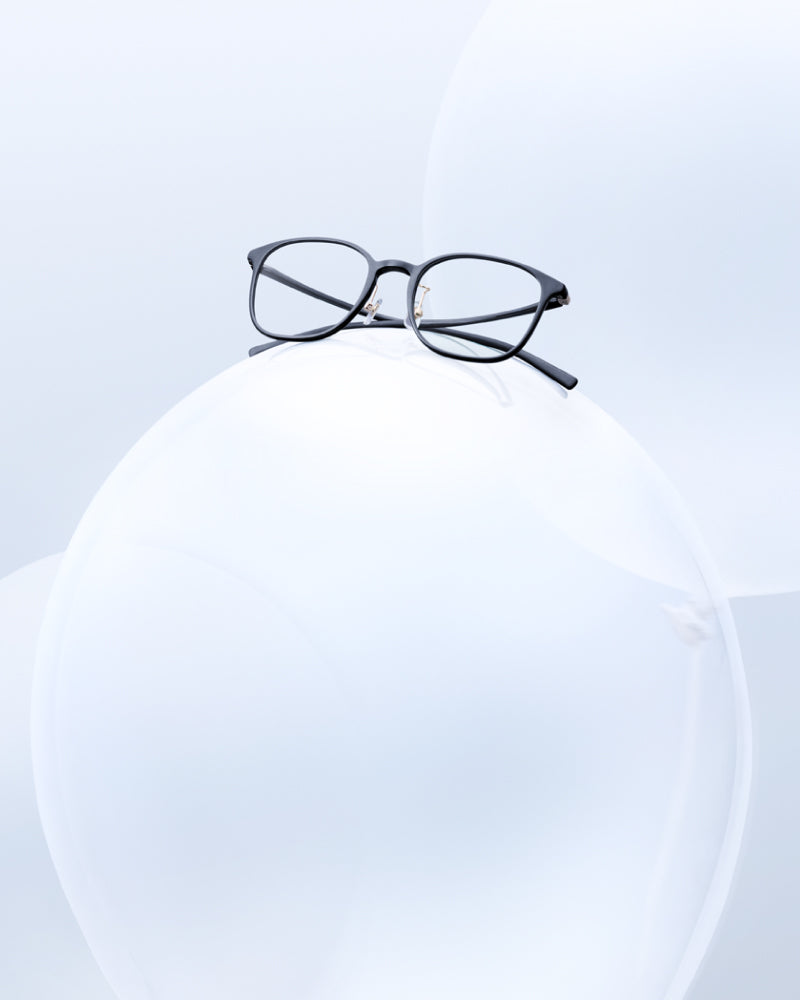Whenever you shop for new glasses with JINS, you'll need to upload an up-to-date eyeglass prescription online. You can request a printed copy of your prescription after an eye exam. But once you get it, the collection of numbers and letters included may be confusing. What do they mean, and how do they represent your vision?
Fortunately, the answers aren't too complicated once you know what you're looking at. This guide will help you understand your prescription so you can order your glasses ASAP.
Your Eyeglass Prescription Explained
The abbreviations and numbers on eyeglass prescriptions explain the strength of your vision and the shape of your eyes. They tell you how your vision has changed since your last prescription, whether you are nearsighted or farsighted, and if you have astigmatism (and if so, to what degree). Simply put, your prescription tells eyeglass manufacturers how your lenses should be cut.
| Sphere SPH |
Cylinder SPH |
Axis AX |
Prism | Add | |
|---|---|---|---|---|---|
| OD | -3.50 | -0.25 | 132 | - | (blank) |
| OS | -2.50 | DS | - | - | (blank) |
The most common letters you'll see in an eyeglass prescription are OD, OS, SPH, CYL, and Axis. The numbers are formatted as +/-1.00. Below, we'll break down each abbreviation and number listed on your chart.
OD vs. OS
On an eyeglass prescription, OD is an abbreviation for oculus dexter, which is Latin for “right eye.” OS stands for oculus sinister, meaning “left eye.” Some clinics have modernized their prescriptions to use RE (right eye) and LE (left eye) to give patients more clarity.
SPH
The SPH on your prescription is short for “sphere.” These numbers represent how much lens power is necessary to correct vision problems in each eye and help you see clearly.
If there is a plus (+) symbol next to these numbers, that means you're farsighted. A farsighted individual sees objects in the distance clearly, while anything nearby will appear out of focus. A minus (-) symbol indicates that you are nearsighted. When you are nearsighted, all objects close up are clear, but anything far away is blurry.
Lens power is measured in diopters (D). The further from zero the number is, the more correction is needed. For example, -7.00 D is a stronger prescription than -2.50 D.
CYL
CYL or cylinder references the power needed to correct for astigmatism. While most eyes are spherical like a baseball, eyes with astigmatism have more of an ovular shape, like a football. As a result, you may experience issues like difficulty seeing at night, eye strain, or headaches. Since one curve is longer than the other, the CYL number is meant to correct the second curve.
Like the SPH column, CYL numbers may have a minus sign for nearsightedness or a plus sign for farsightedness. A blank column means you don't have astigmatism.
Axis
If you have astigmatism, you'll also see an axis value. This number describes where astigmatism lines up on your cornea. In other words, it tells the manufacturer what angle on the lens should not correct astigmatism. The axis will be between 1 and 180°.
Eyeglass prescriptions can change over time, which is why routine eye exams are so important. If it's been a year or two since your last appointment, consider scheduling one to ensure your glasses meet your needs today.
Now that you have a good understanding of what your chart means, you're ready to get your new pair of glasses. Browse our extensive selection of stylish eyeglasses. Filter by frame shape, fit, and size to find the perfect frames for your lifestyle. Not sure what your measurements are? Take a look at this comprehensive guide to eyeglass frame measurements to enjoy the best fit.


















